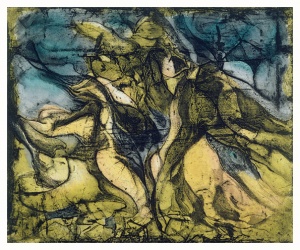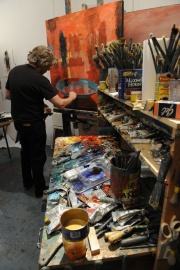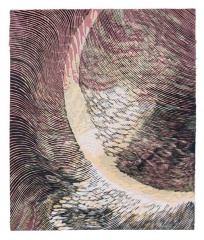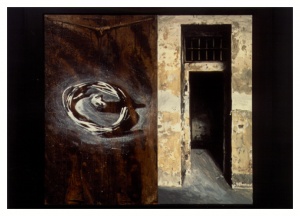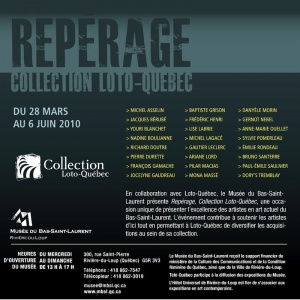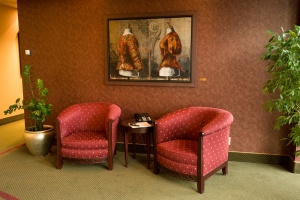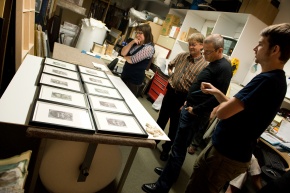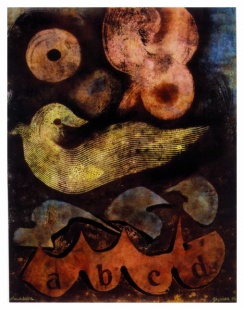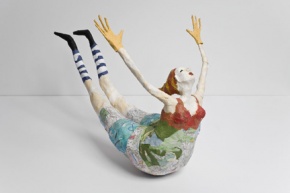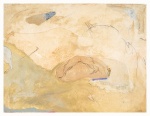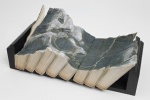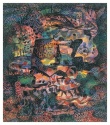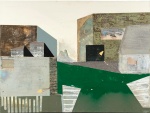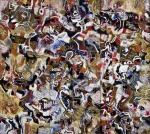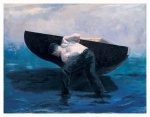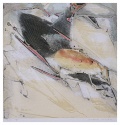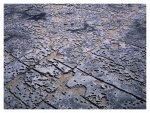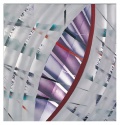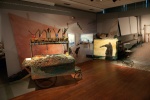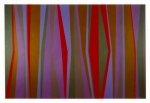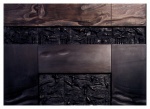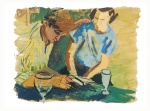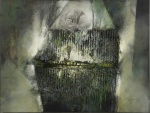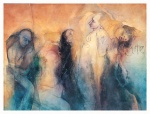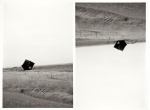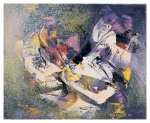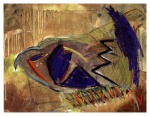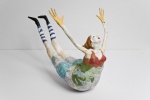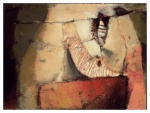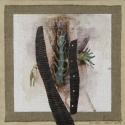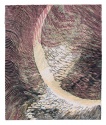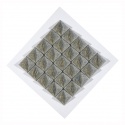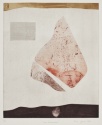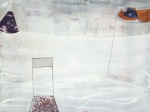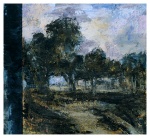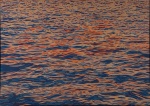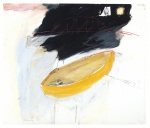The Loto-Québec Collection of Quebec Art
par Fournier, Martin
For over 30 years Collection Loto-Québec has supported visual artists who live and work in Quebec by purchasing their work. In 2010 the Collection comprised 4,200 works from every region of Quebec in a wide variety of styles and media. Almost all are displayed in Loto-Québec workplaces and public spaces, or in museums and galleries throughout the province. In these diverse ways, Collection Loto-Québec makes a remarkable contribution to developing and sustaining Quebec culture in the field of visual arts.
Article disponible en français : Collection Loto-Québec en arts visuels québécois
The Collection’s Thirtieth Anniversary
In 2009 Loto-Québec came up with three very special ways to celebrate the Collection’s thirtieth birthday. First was an exhibit of a hundred representative works at Espace Création, the gallery at Loto-Québec headquarters. The show, aptly named Nomade, later toured Quebec. The two other events sought to boldly break new ground. One reconstituted artists’ studios—those little known, somewhat mysterious places where the alchemical transformation of base materials into art takes place. The other named 24 different Quebec celebrities honorary commissioners in charge of curating their own exhibition from the Collection’s 2,400 works. These included singer Robert Charlebois, theatre director René-Richard Cyr, actresses Françoise and Sophie Faucher and designer Jean-Claude Poitras. The three events celebrated the unique personality and coming of age of the Loto-Québec Collection, created not long after the corporation was founded in 1970.
Creation and Mission
Collection Loto-Québec was born of an annual printmaking competition launched in 1979. (NOTE 1) The winning works were initially given as corporate gifts by Loto-Québec. In 1985 this evolved into an acquisition program and the Collection these works eventually formed.
From the outset, the collection’s mission was to annually acquire a large number of works by practicing visual artists who were experimenting and pursuing new directions—especially younger emerging artists. This mission was paired with the desire to widely disseminate artworks rather than keep them stored away. By providing direct support for artists through the acquisition and dissemination of their work, Collection Loto-Québec enriches Quebec’s artistic heritage, year after year.
The Collection
The 4,200-odd pieces in the collection represent work by over 1,000 artists. Most are displayed in workplaces such as Loto-Québec offices. Others are shown in various spaces that are open to the public free of charge, including regional cultural centres that generally don’t have large exhibition rooms like museums. These restrictions mean that most acquisitions are medium format works suitable for hanging on walls. Nonetheless, the Collection also contains a number of three-dimensional works (sculptures and artefacts).
All printmaking techniques are well-represented in the Collection, as are an array of other media, including oils, watercolours, pastels, drawings, paper works, ceramics and mixed media techniques. Whether figurative or not, artworks must reflect an original creative process, not a merely decorative intent. Loto-Québec has chosen not to focus on a single period, region or genre but rather to explore the full breadth of the Quebec’s artistic output in all its richness and diversity. The collection’s chief strength is undoubtedly its inclusivity, encompassing regional and stylistic varieties and illustrating the many currents that have influenced visual arts in the 20th and 21st centuries throughout Quebec.
Standing Behind Quebec Artists
In the course of some three decades, the Collection’s policies and acquisition strategies have allowed it to foster close ties with Quebec’s artistic community. Loto-Québec acquires works directly from the artists or the galleries that represent them. This policy of eschewing collectors and the speculative art market means that the Collection’s full support reaches the artists themselves. Another initiative, the Repérage sales exhibit program, supports artists outside of Montreal, where most of the Collection’s activities are concentrated. Through Repérage the Collection co-organizes sales exhibits with regional cultural stakeholders who are well-acquainted with the artists and their cultural milieu and can help the Collection’s curator discover works from the province’s many regions. The curator assembles special acquisition juries for each event and acquires a number of works on site. The attention paid to emerging artists—some still in school—along with the Collections renown in artistic circles helps foster careers in the visual arts: placing work in an established collection is a recognized step along an artist’s professional path. Inclusion in the collection is all the more valuable as dissemination of the acquired artwork is virtually guaranteed, helping artists gain exposure and appreciation.
A Public Presence
A fundamental facet of contemporary art is how it reconfigures relationships between artists and the surrounding world. Every aspect of this relationship is explored, as are the full expressive potential of colours, materials and forms. This tendency can be unsettling at first—sometimes viewers need to be initiated and require some guidance to connect with the work. The Collection’s visual arts communication strategy, based largely on an aggressive dissemination policy, facilitates viewers’ connection with the art. The public no longer comes to the museum to discover enigmatic works of art; now “the museum” moves into the public arena. Loto-Québec first implemented this strategy in the common areas of its own workplaces—lobbies, service counters, conference rooms, waiting rooms, cafeterias, employee kitchens and other areas are decorated with works from the collection. In every Loto-Québec building contemporary visual art is on display. But the work of disseminating the Collection does not stop there.
The Collection’s artworks are widely shown in every region in Quebec, not just Montreal and Quebec City where the art scene and art education are concentrated. In this way, Loto-Québec helps promote and develop the visual arts throughout Quebec. Over a 23 year period beginning in 1987, Loto-Québec organized 75 exhibitions, an average of three per year—no small feat. These exhibitions were held at Espace Création, the gallery at Loto-Québec’s Montreal headquarters, as well as museums, regional exhibition and cultural centres, maisons de la culture and alternative exhibition spaces like colleges. In every case, Loto-Québec provides financial backing to help organize and promote the exhibitions, which are free of charge to the public. Collection Loto-Québec plans some exhibitions itself, and also works with cultural groups who solicit their help. In the latter case, the Collection’s curator and team collaborate with the requesting organization to work out the details and select the works to be shown.
A Democratic Spirit: An Asset for the Collection
Collection Loto-Québec is unique in many ways, but especially for the democratic spirit that shapes its acquisition and dissemination policies through employee participation. This policy shares some traits with, but goes further than, Musée national des beaux arts’ art loan program, Collection Prêt d'œuvres d'arts. Any Loto-Québec employee, from clerical staff to upper management, can choose any three works of art (subject to availability) to hang in their workspace, usually for a period of five years. The walls of Loto-Québec offices are literally covered with works of art and have become, in a sense, both the Collection’s vaults and exhibition halls.
Employees choose artworks during “hanging sessions” featuring new acquisitions or works returned from a previous placement. Loan periods can sometimes be extended when employees really love the pieces they spend their workdays with. On the other hand, if an attachment does not form, the artworks’ stay may be cut short. In this way all Loto-Québec employees have the privilege of forging a personal relationship with a small number of works they especially like, and permanent contact with a larger range of artworks. Such an initiative totally transforms the workplace atmosphere, and Loto-Québec’s 6,800 employees’ appreciation of contemporary art.
This democratic spirit is also manifest in the acquisition process. As mentioned, the process is overseen by a jury that meets several times per year. The jury is made up of five members: one artist with a work in the Collection, a representative of Quebec’s larger cultural milieu, and three Loto-Québec employees (any Loto-Québec employee who wishes may apply to be a member of the jury; no special expertise is required). The curator shows the five jury members a series of works that have been chosen as interesting, explaining why these works are up for consideration but never mentioning their price. The curator does not take part in the vote. The jury votes according to their feelings, creating a list of works to be acquired until the budget is used up.
Work submitted to the jury may come to the curator’s personal attention at exhibitions, gallery shows, or studio visits, or it may be referred by artists, agents or galleries by means of an official form available on the Collection website (NOTE 2). The Collection’s annual acquisitions budget represents 1/100 of 1% of Loto-Québec’s total sales, allowing it to acquire an average of 200 artworks per year.
Enriching the Collective Heritage
Collection Loto-Québec’s acquisition policy is such that it contains relatively few of the better known—and generally more expensive—works by such Quebec luminaries as Rioppelle, Pellan, Borduas, Fortin and others, most of whom are no longer with us, even though most of these artists are represented in the Collection. One notable exception to the policy was the major contribution Loto-Québec made to help acquire Jean-Paul Rioppelle’s landmark Hommage à Rosa Luxemburg, and a few other works by this internationally recognized Canadian painter. These are now on permanent display at Quebec City’s Musée national des beaux-arts, as befits their preeminent place in the province’s artistic heritage.
The Collection is the shared property of all Quebecois, because Loto-Québec is a parapublic institution operating under the jurisdiction of Quebec’s finance ministry. Through over thirty years of support for the creation and dissemination of new artworks Loto-Québec has assembled a vast, representative and eclectic collection that includes all the main currents that have held sway in the contemporary art world, while helping artists who live and work in the province build their careers. The collection is a precious part of Quebec’s collective heritage whose value will only increase with time.
A Living Heritage
Ever since the annual printmaking competition launched in 1979 and the artworks acquisition program created in 1985, Loto-Québec management has maintained the Collection and respected its mission. Contemporary visual art has slowly but surely become an entrenched part of the corporation’s culture, from senior management down to the rank and file, all of whom do their part to help Quebec visual arts develop and thrive. Today, all new Loto-Québec real estate development or renovation projects consider the visual arts aspect from the beginning and solicit involvement from the Collection.
Martin
Fournier
Encyclopedia of French Cultural Heritage in North America
NOTES
1. The competition was suspended in 2000.
2. In the case of the Repérage exhibit sales, preselection is completed by the regional stakeholders who developed the exhibition.
Additional DocumentsSome documents require an additional plugin to be consulted
Images
-
 Andalusia, nocturne,
Andalusia, nocturne,
1991 -
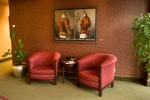 Au siège social de Lo
Au siège social de Lo
to-Québec, les ... -
 Au siège social de Lo
Au siège social de Lo
to-Québec, les ... -
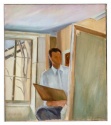 Autoportrait 1935, 19
Autoportrait 1935, 19
63
-
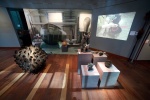 Collection Loto-Québe
Collection Loto-Québe
c: l'oeuvre et ... -
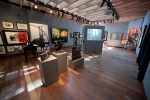 Collection Loto-Québe
Collection Loto-Québe
c: l'oeuvre et ... -
 Dépaysement 09-01, 2
Dépaysement 09-01, 2
009 -
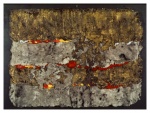 Entre ciel et terre,
Entre ciel et terre,
1992
-
 Espoir de vivre, 1977
Espoir de vivre, 1977
-
 Étude d'enregistreme
Étude d'enregistreme
nt 06-03, 2003 -
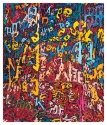 Exact Change Only, 19
Exact Change Only, 19
89 -
 Fences, Ropes and Hed
Fences, Ropes and Hed
ges, 2008
-
 L'annonce faite à Ma
L'annonce faite à Ma
rie, 1987 -
 L'artiste Alexandre M
L'artiste Alexandre M
asino, photogra... -
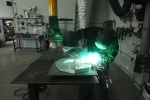 L'artiste Jean-Pierre
L'artiste Jean-Pierre
Morin, photogr... -
 L'artiste Tom Hopkins
L'artiste Tom Hopkins
, photographié ...
-
 L'atelier de Mike Wel
L'atelier de Mike Wel
ply, 2002 -
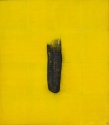 L'ombre clandestine,
L'ombre clandestine,
2005 -
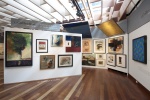 La collection Loto-Qu
La collection Loto-Qu
ébec selon... A... -
 La collection Loto-Qu
La collection Loto-Qu
ébec selon... S...
-
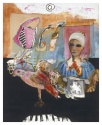 Les héritiers de Pro
Les héritiers de Pro
méthée, 2000... -
 Les nouveaux vestiges
Les nouveaux vestiges
n° 8, 2008 -
 Leurs esprits s'enfon
Leurs esprits s'enfon
çaient, désor... -
 Mémoire de l'éléph
Mémoire de l'éléph
ant II, 2008
-
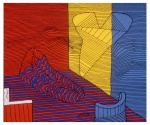 N° 6, lundi le 23, 19
N° 6, lundi le 23, 19
89 -
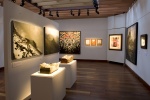 Nomade: l'exposition
Nomade: l'exposition
Loto-Québec en ... -
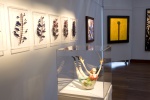 Nomade: l'exposition
Nomade: l'exposition
Loto-Québec en ... -
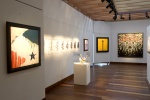 Nomade: l'exposition
Nomade: l'exposition
Loto-Québec en ...
-
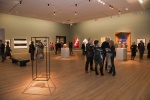 Nomade: la collection
Nomade: la collection
Loto-Québec en... -
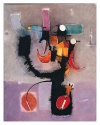 Numérotée IX, 1991
Numérotée IX, 1991
-
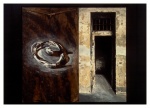 Opus Incertum XCIX: l
Opus Incertum XCIX: l
a perpétuité,... -
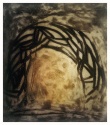 Passage III, 1994
Passage III, 1994
-
 Peinture n° 20-92, 19
Peinture n° 20-92, 19
92 -
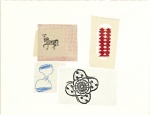 Petite pièce ouverte
Petite pièce ouverte
n° 41, 2010 -
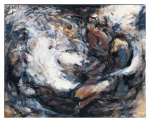 Que serais-je sans to
Que serais-je sans to
i ?, 1992 -
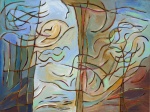 Rêverie, 2006
Rêverie, 2006
Vidéos
-
 Collection Loto Québec - L'acquisition des oeuvres
Collection Loto Québec - L'acquisition des oeuvres
-
 Collection Loto-Québec - Ateliers d'artistes
Collection Loto-Québec - Ateliers d'artistes
-
 La collection Loto-Québec
La collection Loto-Québec

